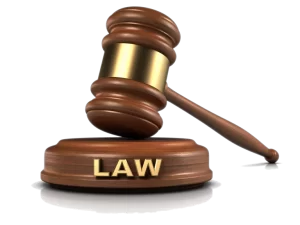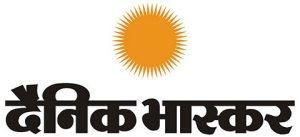17-02-2022) समाचारपत्रों-के-संपादक

Date:17-02-22
I For International?
IITs expanding abroad is a good idea. But setting domestic house in order is a prerequisite
TOI Editorial
In higher education, IITs are widely seen as crown jewels of India. So, IITs being in talks to open up outposts in Britain makes sense: Atop Indian education brand pursuing international expansion. The question is whether everything is top class as far as IITs are concerned. Can they offer a competitive education product in a foreign and more advanced market? A significant part of IITs’ success at home is built on the fact that some of the smartest of students prep for months to get in, via a ferociously competitive examination. These students are likely to shine thanks to their own merit. How much of their success is due to pedagogy and research quality in IITs, including in the older institutions, is the key question.
As for the new ones, a 2019 CAG audit of eight IITs set up between 2008-09 found them in deplorable conditions. States haven’t provisioned land properly, labs are inadequate, little research is sponsored by non-government sources, and most telling of all, over a five-year period these IITs obtained zero patents. The audit strongly indicts the governing bodies for poor stewardship. Therefore, much thought and action should precede foreign expansion.
What about foreign universities setting up campuses in India? Around 2010, when a Union Cabinet first approved a proposal to allow foreign universities to set up branches here, IIT Bombay started work on opening an applied science campus in New York City. Sadly, neither project has borne fruit. More recently, National Education Policy 2020 indicates a red carpet for top foreign universities and Budget 2022 suggests they will soon have a pathway to operate in Gujarat’s GIFT city without having to follow restrictive domestic rules. There was also the GoI proposal of creating institutions of excellence. India’s young, those who don’t make it to IITs, or get admissions in foreign universities, await fruition of these big promises.
The broader issue is the rot in most of higher education. NEP has proposed a reformed higher education regulator, and when it happens this can be the first step in university reform. GoI and states must acknowledge that for-profit private investment in an environment that encourages enterprise is the best bet to increase quality. Good faculty, good labs, good libraries, a good campus, all of this costs money. Deserving students who can’t pay should get government scholarships. Minus radical reform, most of higher education will remain, as it is now, meaningless.

Date:17-02-22
A case for a more federal judiciary
There is an imbalance now which the Supreme Court of India needs to address by empowering High Courts again
Srinath Sridevan is Advocate, Madras High Court. Ananya Pattabhiraman is a student of law, Symbiosis Law School, Hyderabad
 Nearly 150 years ago, A.V. Dicey, the foremost constitutional lawyer of his day, wrote, “The essential characteristic of federalism is the distribution of limited executive, legislative and judicial authority among bodies which are coordinate with and independent of each other”. Much has been written about the federal structure in relation to the legislature and the executive. We now examine the Indian judiciary and the need to strengthen the federal nature of our judiciary.
Nearly 150 years ago, A.V. Dicey, the foremost constitutional lawyer of his day, wrote, “The essential characteristic of federalism is the distribution of limited executive, legislative and judicial authority among bodies which are coordinate with and independent of each other”. Much has been written about the federal structure in relation to the legislature and the executive. We now examine the Indian judiciary and the need to strengthen the federal nature of our judiciary.
India is a union of States. The Supreme Court of India has held that the federalist nature of our country is part and parcel of the basic structure of the Constitution.
Integrated system
Federalism is a midpoint between unitarism which has a supreme centre, to which the States are subordinate, and confederalism wherein the States are supreme, and are merely coordinated by a weak centre. The idea which lies at the bottom of federalism is that each of the separate States should have approximately equal political rights and thereby be able to maintain their non-dependent (for want of a better word) characteristics within the larger union.
An integral requirement of a federal state is that there be a robust federal judicial system which interprets this constitution, and therefore adjudicates upon the rights of the federal units and the central unit, and between the citizen and these units.
The federal judicial system comprises the Supreme Court and the High Court in the sense that it is only these two courts which can adjudicate the above rights. Dr. B.R. Ambedkar stated in the Constituent Assembly: “The Indian Federation though a dual polity has no dual judiciary at all. The High Courts and the Supreme Court form one single integrated judiciary having jurisdiction and providing remedies in all cases arising under the constitutional law, the civil law or the criminal law.”
The Supreme Court was created under the Constitution, and is a relatively new court. On the other hand, some of the High Courts in our country have been in existence since the 1860s (and some existed even before that, in their earlier avatars as supreme courts of the Presidencies).
An equality of power
The Indian Constitution envisaged the equality of power of High Court judges and Supreme Court judges, with a High Court judge not being a subordinate of a Supreme Court judge. Famously, the Chief Justice of the Bombay High Court, Justice M.C. Chagla and the Chief Justice of the Madras High Court, Justice P.V. Rajamannar, when offered seats in the newly formed Supreme Court, rejected the offer, preferring to be Chief Justices of prestigious High Courts than being ordinary judges in a newly formed court.
The Supreme Court has, on many occasions, reiterated the position that the Supreme Court is superior to the High Court only in the appellate sense. Therefore, the theoretical position has always been that High Court judges and Supreme Court judges are equals. A delicate balance is required to be maintained between the Supreme Court and the High Courts in order for the constitutional structure dreamt of by B.R. Ambedkar to work.
This balance existed from Independence onwards, until the 1990s. Since then, however, it has been tilting in favour of the central court. The need for this balance was underscored during the Emergency, when the High Courts (a significant number, at least) stood out as beacons of freedom, even as the Supreme Court failed in this duty.
In recent years, three specific trends have greatly eroded the standing of the High Court, leading to an imbalance in the federal structure of the judiciary. First, the Supreme Court (or rather, a section of its judges, called “the Collegium”) has the power to appoint judges and chief justices to the High Courts and the Supreme Court. This Collegium also has the power to transfer judges and chief justices from one High Court to another. Second, successive governments have passed laws that create parallel judicial systems of courts and tribunals which provide for direct appeals to the Supreme Court, bypassing the High Courts. Third, the Supreme Court has been liberal in entertaining cases pertaining to trifling matters.
A centralisation and effects
This has inevitably led to the balance tipping in favour of a centralisation of the judiciary. The greater the degree of centralisation of the judiciary, the weaker the federal structure.
In the United States, empirical research by the legal researcher, Ilya Somin, shows that the U.S. Supreme Court is far more likely to strike down a state statute as unconstitutional than a federal statute. This research leads to the conclusion that judicial review by a centralised judiciary tends toward unitarism (the opposite of federalism), and the author says, “Courts face much weaker constraints when they strike down state legislation, especially state laws that are disapproved of by national political majorities… The federal government and sympathetic state governments elsewhere in the country may even support such judicial intervention.” In Nigeria, a similar federal country, research has shown that the Supreme Court favours the jurisdiction of the central government over the State units, and this has manifested itself in recent litigations over mineral rights and subsoil rights, where the Supreme Court has favoured interpretations which support the rights of the centre over the States.
The Supreme Court of India today, by playing the role of a collegium, effectively wields the power to appoint a person as a judge to a High Court or to transfer him or her to another High Court, or to appoint (or delay the appointment) of a sufficiently senior High Court judge as a chief justice or as a judge of the Supreme Court. The practical impact of this in the power dynamic between a High Court judge and a Supreme Court judge, leaves little to be said or imagined.
Moving to the second factor, an aggressively interventionist Supreme Court leads many to approach it directly as a panacea for all ills befalling the nation. In 2018, some individuals from Delhi directly filed a petition in the Supreme Court to curtail Deepavali celebrations. The Court promptly entertained the writ petition and issued directions that Deepavali could be celebrated for only one or two hours in the evening. This led to an uproar because people in South India celebrate Deepavali in the morning. Earlier, in another example, the Supreme Court spent days deciding the height of the dahi handi during Gokulashtami celebrations.
We see the Supreme Court interfering in matters which are clearly of local importance, having no constitutional ramifications. The Court itself observed recently, “Frivolous matters are making the institution dysfunctional… These matters waste important time of the court, which could have been spent on serious matters, pan-India matters.”
These are very wise words, but the reality is that the Supreme Court does entertain these frivolous matters.
Every time the Supreme Court entertains an appeal against a High Court decision, it second guesses the High Court. It sends out the message to the litigant: ‘It does not matter that the High Court ruled against you, you can take one more chance with this appeal.’
Every time the Supreme Court entertains a public interest litigation on some matter which could just as effectively have been dealt with by the High Court, what the litigant hears is: ‘You do not need to approach the High Court, you can directly file your claim here, and you will not only get your hearing, you will get publicity too.’
Parallel judicial hierarchies
The third of the factors identified by us is the creation of parallel hierarchies of courts and tribunals, whether it be the Competition Commission, or the company law tribunals, or the consumer courts. In all these cases, the High Courts are bypassed. Laws have been drafted such that the High Court has no role to play and the Supreme Court directly acts as an appellate court.
The effect of this can be easily imagined, whether it be the weakening of the authority of the High Courts or the possibility of a tendency towards subservience or apathy of the judges of the High Courts.
Political scientist and historian Tocqueville writes that in the decades immediately preceding the French Revolution there was a gradual erosion in the powers of the nobles living in the rural parts of France, and a gradual aggrandisement of powers in the hands of the aristocracy in Paris. The conclusion that this very learned author arrives at is that all central units have a natural tendency to aggrandise power to themselves from the state units, believing that centralisation enables them to discharge their duties more effectively in relation to the entire state. But in reality, the weakening of the state units sets off a weakening of the entire body of the state, which gradually ossifies into irreversible decay.
We conclude by hoping that the Supreme Court itself recognises the importance of self-abnegation and restores the federal balance by re-empowering the High Courts. This will be in the best interest of the nation.

Date:17-02-22
क्रिप्टो पर विरोधाभासी रवैए का क्या मतलब
विराग गुप्ता, ( लेखक और वकील )
 सरकार व संसद के सामने क्रिप्टो का संकट बड़ा बन गया है। आम बजट में आभासी संपत्ति यानी क्रिप्टो और एनएफटी पर 30 फीसदी टैक्स लगाने के साथ सरकारी आभासी मुद्रा जारी करने की बात की गई है। बजट के बाद रिजर्व बैंक के गवर्नर ने क्रिप्टो को संपत्ति मानने से इंकार कर दिया तो फिर टैक्स लगाकर उसको वैधता देने की क्या तुक है? बजट के बाद सीबीडीटी के मुखिया ने एक इंटरव्यू में कहा कि इनकम टैक्स विभाग पिछले 5 सालों से क्रिप्टो के कारोबार पर नजर रखे है। अगर सरकार को इसकी 5 सालों से जानकारी थी तो खरबों डॉलर के कारोबार पर टैक्स लगाने का सिस्टम क्यों नहीं बनाया गया? अब 30 फीसदी के टैक्स और एक फीसदी टीडीएस के कानून से क्रिप्टो के पुराने व्यापार को भी वैधता मिलने से कारोबारियों की मनमांगी मुराद पूरी हो गई। इस मसले पर दो बड़े सवाल हैं? क्रिप्टो संपत्ति नहीं है, इसकी कोई वैल्यू नहीं है, यह पोंजी स्कीम व सट्टेबाजी की तरह अवैध है तो टैक्स लगाकर इसे वैधता क्यों दी जा रही है? दूसरा यदि सरकार ने इसे संपत्ति का दर्जा दे दिया है तो 50 फीसदी से ज्यादा संपत्ति कर लगाकर सरकारी खजाने की आमदनी क्यों नहीं बढ़ाई जाती?
सरकार व संसद के सामने क्रिप्टो का संकट बड़ा बन गया है। आम बजट में आभासी संपत्ति यानी क्रिप्टो और एनएफटी पर 30 फीसदी टैक्स लगाने के साथ सरकारी आभासी मुद्रा जारी करने की बात की गई है। बजट के बाद रिजर्व बैंक के गवर्नर ने क्रिप्टो को संपत्ति मानने से इंकार कर दिया तो फिर टैक्स लगाकर उसको वैधता देने की क्या तुक है? बजट के बाद सीबीडीटी के मुखिया ने एक इंटरव्यू में कहा कि इनकम टैक्स विभाग पिछले 5 सालों से क्रिप्टो के कारोबार पर नजर रखे है। अगर सरकार को इसकी 5 सालों से जानकारी थी तो खरबों डॉलर के कारोबार पर टैक्स लगाने का सिस्टम क्यों नहीं बनाया गया? अब 30 फीसदी के टैक्स और एक फीसदी टीडीएस के कानून से क्रिप्टो के पुराने व्यापार को भी वैधता मिलने से कारोबारियों की मनमांगी मुराद पूरी हो गई। इस मसले पर दो बड़े सवाल हैं? क्रिप्टो संपत्ति नहीं है, इसकी कोई वैल्यू नहीं है, यह पोंजी स्कीम व सट्टेबाजी की तरह अवैध है तो टैक्स लगाकर इसे वैधता क्यों दी जा रही है? दूसरा यदि सरकार ने इसे संपत्ति का दर्जा दे दिया है तो 50 फीसदी से ज्यादा संपत्ति कर लगाकर सरकारी खजाने की आमदनी क्यों नहीं बढ़ाई जाती?
आम लोगों को आयकर के साथ वित्तीय लेनदेन और संपत्ति के हस्तांतरण पर जीएसटी देना पड़ता है। भारत में डेढ़ करोड़ से ज्यादा लोग 458 क्रिप्टो एक्सचेंज के माध्यम से 17436 क्रिप्टो करेंसीज में खरबों डॉलर का सालाना कारोबार करते हैं। लेकिन उनसे जीएसटी वसूली का सिस्टम नहीं बना। क्रिप्टो के कई एक्सचेंजों के खिलाफ हवाला और मनी लांड्रिंग की प्रवर्तन निदेशालय जांच कर रहा है। लेकिन सरकार के पास ना तो कोई आंकड़ा है और ना ही कोई रेगुलेटरी हस्तक्षेप। 27 जुलाई 2021 को राज्यसभा में सुशील कुमार मोदी के सवाल के जवाब में वित्त मंत्री ने कहा था कि सरकार के पास क्रिप्टो एक्सचेंज की अवैध गतिविधियों के बारे में कोई जानकारी नहीं है। पूर्वी दिल्ली नगर निगम के नए नियम के अनुसार शादी और धार्मिक शोभायात्रा में शामिल होने के लिए घोड़ागाड़ियों को लाइसेंस लेने के साथ तीसरे पक्ष का बीमा कराना भी जरूरी है। लोगों की हिफाजत के लिए केंद्र सरकार ने वाहन कंपनियों को कार की सभी सीटों पर 3 पॉइंट सीट बेल्ट लगाने का आदेश दिया है। लेकिन खरबों डॉलर के क्रिप्टो कारोबार से अर्थव्यवस्था और निवेशकों को सुरक्षित रखने के लिए रजिस्ट्रेशन और नियमन की ठोस व्यवस्था नहीं बनाई गई है। उसके बजाय क्रिप्टो के धुरंधर कारोबारियों ने सेल्फ रेगुलेशन बनाकर देश के संविधान और गणतंत्र को ठेंगा दिखाने का काम किया है।
क्रिप्टो के खिलाफ कानून नहीं बनाने के पीछे दो बड़ी दलीलें दी जा रही हैं। पहला ब्लाॅकचेन टेक्नोलॉजी देश के लिए उपयोगी है। शिक्षा के साथ ई-गवर्नेंस, जीएसटी और मेडिकल क्षेत्रों में ब्लॉकचेन के इस्तेमाल के लिए नीति आयोग और आईटी मंत्रालय काम कर रहे हैं। लेकिन क्रिप्टो के नियमन या बैन करने से ब्लॉकचेन टेक्नॉलॉजी पर प्रतिबंध तो नहीं लग जाएगा। कुछ लोग इंटरनेट की तर्ज पर क्रिप्टो की तरफदारी करते हैं लेकिन क्रिप्टो का कारोबार इंटरनेट की तरह पारदर्शी और जवाबदेह नहीं है।
क्रिप्टो का नियमन नहीं करने के पक्ष में दूसरा तर्क है कि यह इंटरनेट आधारित मुद्रा या संपत्ति है। इसलिए अंतर्राष्ट्रीय समुदाय को नियमन की पहल करना चाहिए। यह तर्क निराधार और गलत है। यूरोप और अमेरिका में नग्नता, वेश्यावृत्ति, सट्टेबाजी और शराब के विज्ञापन आदि कानूनी तौर पर वैध हैं। इसके बावजूद भारत में उनके खिलाफ अनेक प्रतिबंध हैं। भारत एक सार्वभौमिक देश और संवैधानिक गणतंत्र है, जहां पर आयात, निर्यात और मुद्रा के लिए अनेक नियम-कानून बने हैं। देशवासियों और अर्थव्यवस्था के हित में क्रिप्टो के खिलाफ भारत को उचित नियमन और प्रतिबंध लगाने का पूरा हक है। उसके बावजूद डार्क नेट और ऑनलाइन से क्रिप्टो का व्यापार यदि हो तो उसके खिलाफ रिजर्व बैंक, आईटी मंत्रालय और प्रवर्तन निदेशालय को सख्त कदम उठाना होगा।
बजट में सरकार ने सरकारी डिजिटल मुद्रा जारी करने का ऐलान किया है। इसे जारी करने से पहले अनेक कानूनों में बदलाव भी करना होगा, जिसके बारे में रिजर्व बैंक या सरकार के पास कोई स्पष्टता या रोडमैप नहीं है। तकनीकी दृष्टि से देखें तो क्रिप्टो का विकेंद्रीकृत होना जरूरी है, इसलिए सरकार-नियंत्रित मुद्रा को क्रिप्टो नहीं कहा जा सकता। सरकारी आभासी मुद्रा लाने के पीछे अगर डिजिटल भुगतान को बढ़ावा देने का मकसद है तो उसके लिए यूपीआई, पेटीएम, गूगल-पे और फोन-पे खूब तरक्की कर रहे हैं। वैसे भी सरकारी कर्मचारियों को अभी तक एनआईसी का सरकारी ईमेल नहीं मिला तो सरकार या रिजर्व बैंक डिजिटल करेंसी को कैसे मैनेज करेगी?
सुप्रीम कोर्ट के जज खानविलकर ने पीएमएलए के हालिया मामले की सुनवाई के दौरान कहा कि पैसा बिजली से तेज दौड़ता है, इसलिए धन शोधन के मामलों की तेज जांच होनी चाहिए। प्रधानमंत्री, वित्त मंत्री, वित्त सचिव और आरएसएस प्रमुख आदि अलग-अलग प्लेटफार्म से क्रिप्टो को अर्थव्यवस्था के लिए खतरनाक बता चुके हैं। बजट के बाद आरबीआई के डिप्टी गवर्नर ने तो पोंजी से खतरनाक बताते हुए क्रिप्टो पर प्रतिबंध लगाने की बात कही। तत्कालीन वित्त सचिव गर्ग ने 2019 में क्रिप्टो को बैन करने के लिए कानून का मसौदा भी बनाया था। फिर देश की अर्थव्यवस्था से खिलवाड़ करने वाले क्रिप्टो को बैन नहीं करने के पीछे बहुमत की सरकार की क्या लाचारी हो सकती है?

